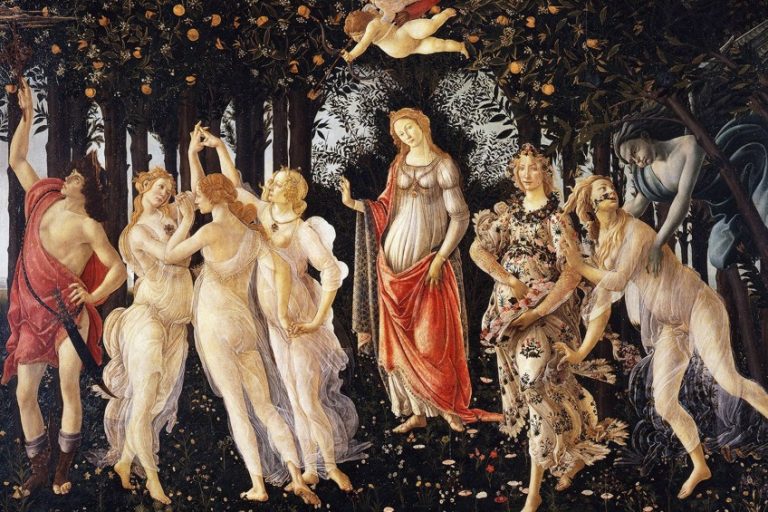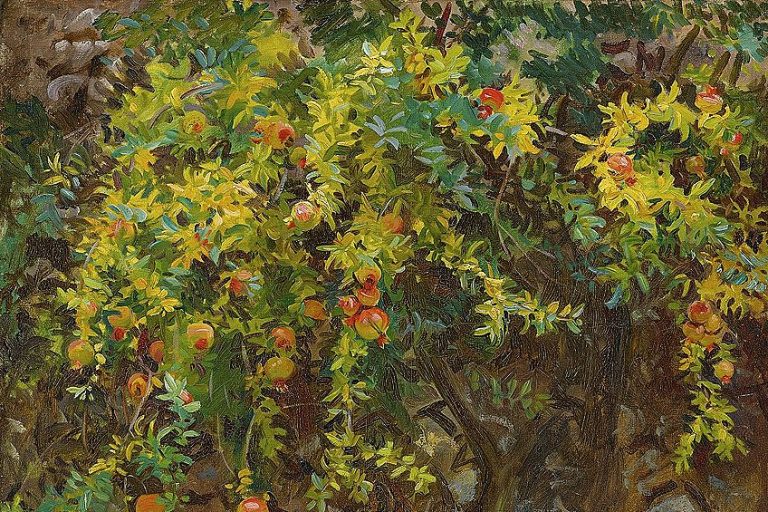“Dante and Virgil in Hell” by William-Adolphe Bouguereau – A Look
William-Adolphe Bouguereau was an acclaimed artist of his time and produced paintings with realism that verged on photography. This article will discuss one of his paintings with darker subject matter namely Dante and Virgil in Hell (1850).
Artist Abstract: Who Was William-Adolphe Bouguereau?
William-Adolphe Bouguereau’s birth date was November 30, 1825, and he died on August 19, 1905. He was born in the city of La Rochelle in France. He learned drawing from a young age and received instruction from Louis Sage; he was also taught by François-Édouard Picot, who was a Neoclassical artist.
Bouguereau also studied at the École des Beaux-Arts as well as gained exposure to art in Italy when he won the Prix de Rome in 1850.
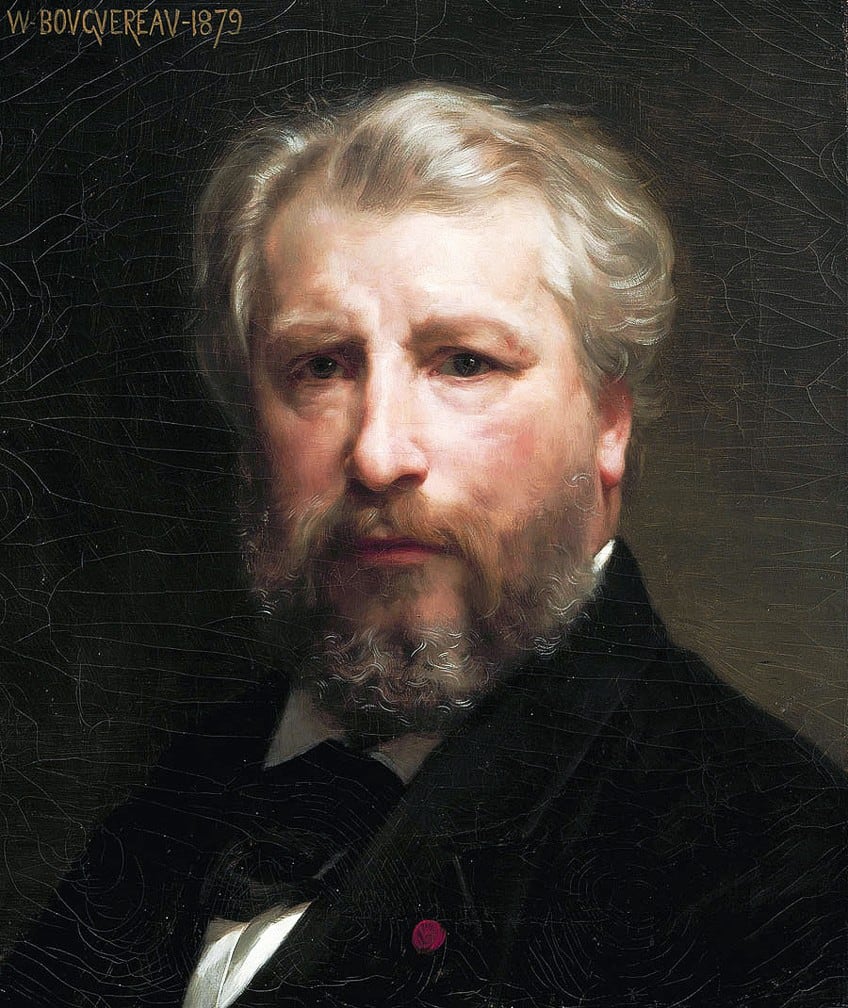
His style was largely characterized by its realism exploring genre paintings around religious and mythological subject matter with a focus on the female form. Some of his artworks include L’Aurore (1881), The Abduction of Psyche (1895), and The Birth of Venus (1879).
Dante and Virgil in Hell (1850) by William-Adolphe Bouguereau in Context
| Artist | William-Adolphe Bouguereau (1825 – 1905) |
| Date Painted | 1850 |
| Medium | Oil on canvas |
| Genre | Realist Genre painting |
| Period / Movement | French Academic Art / Neoclassicism |
| Dimensions (cm) | 280.5 x 225.3 |
| Series / Versions | N/A |
| Where Is It Housed? | Musée d’Orsay, Paris, France |
| What It Is Worth | Uncertain |
This article will the painting Dante and Virgil in Hell by William-Adolphe Bouguereau, exploring a contextual analysis of what inspired it, specifically the Dante and Virgil in Hell meaning, alongside the formal qualities in terms of the art elements and principles.
Contextual Analysis: A Brief Socio-Historical Overview
Looking at the significance of the Dante and Virgil in hell meaning, the Dante and Virgil in Hell by William-Adolphe Bouguereau was inspired by Dante Alighieri’s The Divine Comedy (c. 1308-1321), which is a poem about Dante and his travels through Hell, Purgatory, and Heaven. These are shown to him by guides leading him through each area, namely Virgil, who was a Roman and a poet, and Beatrice, who had a romantic relationship with Dante.
According to the text, Hell consists of what is known as “The Nine Circles of Hell”. Each circle represents a sin, being Limbo, Lust, Gluttony, Greed, Anger, Heresy, Violence, Fraud, and Treachery.

In Dante and Virgil in Hell by William-Adolphe Bouguereau, the artist depicts Dante and Virgil traveling through Hell’s eighth circle, which is Fraud, and specifically the “damned” men known as Capocchio, who was known as an alchemist and heretic, and Gianni Schicchi, who reportedly impersonated Buoso Donati in a gruesome fight.
Formal Analysis: A Brief Compositional Overview
Dante and Virgil in Hell by William-Adolphe Bouguereau is an oil on canvas depicting two fighting men in the depths of hell. It is a visually raw and primal display of the masculine figure in beautiful detail. Below we explore the subject matter further.
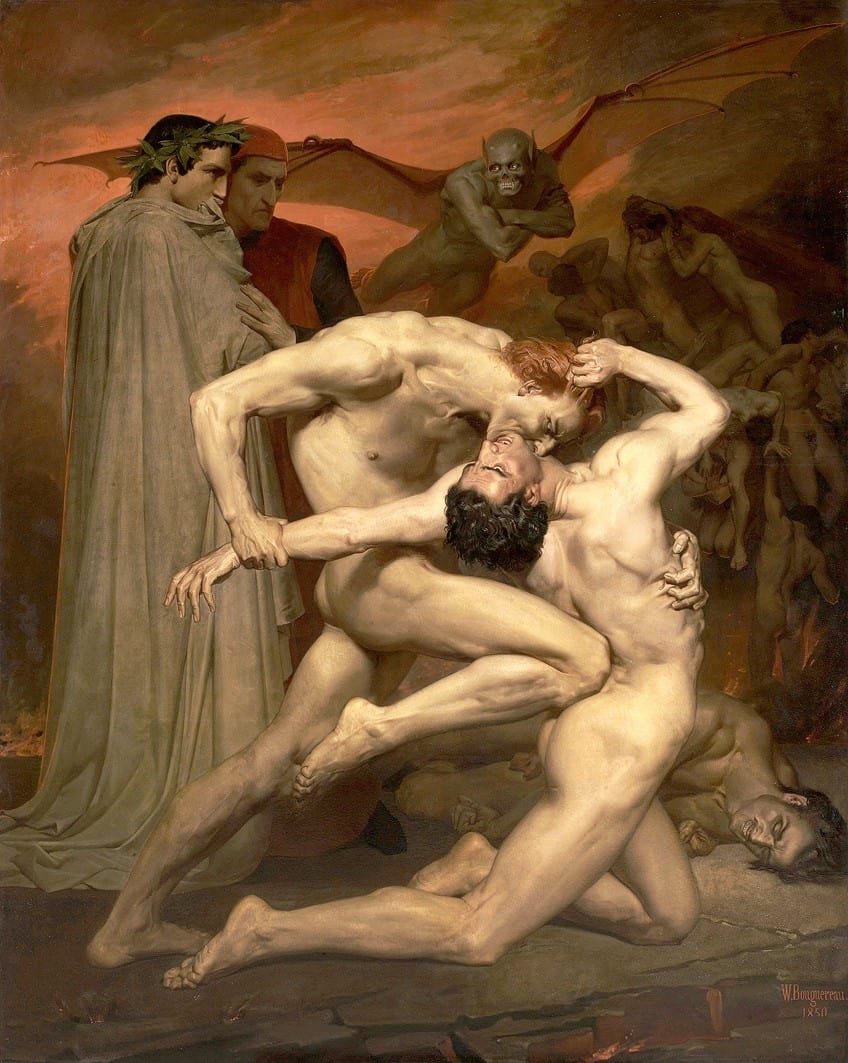
Subject Matter: Visual Description
The Dante and Virgil painting depicts the two muscular men in the foreground, the man to the left is Gianni Schicchi, who is dominating and biting another man in his grip, known as Capocchio, who is helpless on both knees with his back bent over his attacker’s right knee, which is forcefully pushing into his lower back.
Capocchio’s left arm is being stretched out behind him, as if almost out of its range of motion, and his left wrist is held tightly in Schicchi’s right hand, the latter has him in place, as if he is prey, and biting into his neck just below his chin area.

Capocchio’s right hand is grabbing some of Schicchi’s hair while he is struggling, seemingly in vain. There are two other men standing to the left middle ground behind the fighting men, namely Dante and Virgil, who are keenly observing what is occurring. To the right background is a winged demon in flight his arms are folded and he has an evil grin on his face while his eyes are focused on Dante and Virgil. On the stony ground, just below the fighting men, is what appears to be the body of a dead man or a writhing man in suffering.
To the right edge in the background are various naked figures who are known as the “damned” and the entire background appears as a hellish place, with a red sky above and fiery ground.
Color
The dominating color scheme comprises earthy colors from the flesh tones, the grayish hues of the stony ground, and the deep reds of the surrounding hellscape. The two men in the foreground appear lighter in their skin tones as if a light is shining on them, creating further emphasis on them as the main subject matter of the composition.
The background is in darker shadows, which creates contrast.
Texture
There is implied texture in the Dante and Virgil painting and Bouguereau showcases his painting skills with smooth brushstrokes leaving the subject matter with as much realism as possible. Examples of textures include the rough stony ground contrasted with the smooth and muscular flesh of the men as well as the soft appearance of their hair.

Line
There are strong diagonal lines implied and created from the positioning of the men’s legs in the foreground, which directs a linear force to the right and to the left, which created movement and rhythm. The two men in the background are standing straight, which adds a vertical linearity.
Shape and Form
There is movement and dynamism in the Dante and Virgil painting, the two men in the foreground are more fluid in their forms compared to the background figures, which appear more vertical and still. The composition is naturalistic with organic forms that appear more three-dimensional from the effects created by other art elements like color, light, and shading.
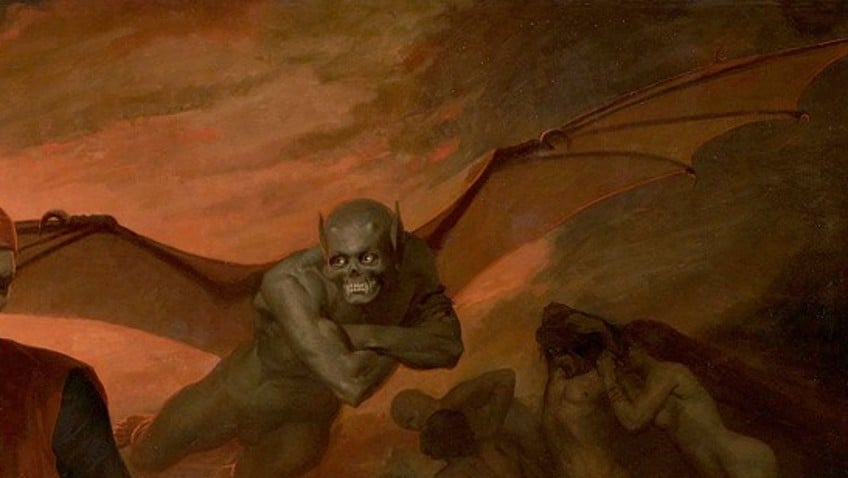
Space
The spatial composition in Dante and Virgil in Hell by William-Adolphe Bouguereau appears visually layered, in other words, the foreground is where the main action takes place while the two men, Dante and Virgil, occupy the middle ground, and the winged demon is in the background with even more figures filling the space in the far background to the right.
The layering effect creates a sense of perspective and depth, which is further emphasized by how the artist portrays the foreground figures with more clarity and definition, and the background figures with less definition and in the shadows.
Bouguereau: Beautiful and Ferocious
In this article, we discussed Dante and Virgil in Hell by William-Adolphe Bouguereau, the inspiration behind the subject matter as well as some of the artist’s stylistic characteristics that compose it. It is a visual portrayal of masculine muscular definition, highlighting the artist’s skillful hand at executing his subject matter that seemingly bridges the gap between the beautiful and the stark.

Reportedly, William-Adolphe Bouguereau did not paint more scenes like the above-mentioned, but it stands as an example of how the artist encapsulated an ideal human form in art, notably within the art styles of Academic and Neoclassical art.
Frequently Asked Questions
Who Created the Dante and Virgil Painting?
William-Adolphe Bouguereau, a French artist, painted the oil on canvas, measuring 280.5 x 225.3 centimeters. Dante and Virgil in Hell (1850), which he exhibited at the Paris Salon in the year 1850.
What Is Dante and Virgil in Hell by William-Adolphe Bouguereau Based On?
Dante and Virgil in Hell (1850) by William-Adolphe Bouguereau was inspired by the poem, The Divine Comedy (c. 1308 – 1321) by the Italian Dante Alighieri, specifically from the part titled Inferno when the characters Virgil and Dante travel to the so-called eighth circle of Hell.
Where Is the Painting Dante and Virgil in Hell by William-Adolphe Bouguereau?
Dante and Virgil in Hell (1850) by William-Adolphe Bouguereau is housed at the Musée d’Orsay in Paris, France.
Alicia du Plessis is a multidisciplinary writer. She completed her Bachelor of Arts degree, majoring in Art History and Classical Civilization, as well as two Honors, namely, in Art History and Education and Development, at the University of KwaZulu-Natal, South Africa. For her main Honors project in Art History, she explored perceptions of the San Bushmen’s identity and the concept of the “Other”. She has also looked at the use of photography in art and how it has been used to portray people’s lives.
Alicia’s other areas of interest in Art History include the process of writing about Art History and how to analyze paintings. Some of her favorite art movements include Impressionism and German Expressionism. She is yet to complete her Masters in Art History (she would like to do this abroad in Europe) having given it some time to first develop more professional experience with the interest to one day lecture it too.
Alicia has been working for artincontext.com since 2021 as an author and art history expert. She has specialized in painting analysis and is covering most of our painting analysis.
Learn more about Alicia du Plessis and the Art in Context Team.
Cite this Article
Alicia, du Plessis, ““Dante and Virgil in Hell” by William-Adolphe Bouguereau – A Look.” Art in Context. March 27, 2023. URL: https://artincontext.org/dante-and-virgil-in-hell-by-william-adolphe-bouguereau/
du Plessis, A. (2023, 27 March). “Dante and Virgil in Hell” by William-Adolphe Bouguereau – A Look. Art in Context. https://artincontext.org/dante-and-virgil-in-hell-by-william-adolphe-bouguereau/
du Plessis, Alicia. ““Dante and Virgil in Hell” by William-Adolphe Bouguereau – A Look.” Art in Context, March 27, 2023. https://artincontext.org/dante-and-virgil-in-hell-by-william-adolphe-bouguereau/.




